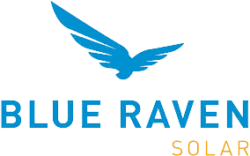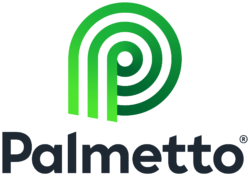Transitioning to solar power is expensive, but financing can make it more affordable. The right payment option can reduce your up-front costs, maximize your savings, and improve your return on investment. We’ve compared the most common solar panel financing options and their benefits, plus recommend the best solar companies for each payment choice.solar
How Much Do Solar Panels Cost?
Homeowners considering solar should prepare for a significant financial investment. Solar panels cost an average of $3.10 per watt, according to the Solar Energy Industries Association (SEIA). That totals $15,500 for an average 5-kilowatt (kW) system. However, the total cost of solar panels will vary based on your chosen solar company, system size, and home energy needs.
Panel pricing also varies in different areas of the country based on local costs. According to solar panel cost data from EcoWatch, panels in Washington, D.C. are above the national average at $3.16 per watt. In contrast, states such as Alaska ($2.41), South Dakota ($2.39), and Kentucky ($2.34) fall under the typical price point.
Factors That Impact Solar Panel Costs
Available tax incentives, location, and solar panel quality will also impact your panel costs. Here’s an overview of these common factors:
- Available sunlight: Homes that receive lots of direct sunlight will yield the best savings.
- Labor: Labor costs vary among solar companies but account for a significant portion of your total price. Large, complicated solar systems are more expensive to install.
- Location: Solar panel costs vary from state to state and depend on local solar prices, electricity rates, and available tax incentives.
- Panel quality: High-quality solar panels are more efficient and produce more energy for your home, but they’re more expensive. Cheaper panels will reduce your initial investment but won’t generate as much long-term savings.
- Solar panel type: Monocrystalline panels are the most efficient but most expensive panels. Polycrystalline panels are more affordable but require more panels to produce enough energy to power your home.
- Solar tax incentives: Federal, state, and local solar tax incentives help reduce solar costs, making the transition more affordable for homeowners.
- System size: Your system size will depend on your home’s energy needs. You’ll need a bigger and more expensive system if you need more power for your home.
How Solar Tax Incentives Reduce Cost
Solar incentives, credits, and rebates are offered at the federal, state, and local level. These reduce your total installation costs, helping you to maximize savings and shorten your payback period, or the time it takes for your energy savings to equal the amount you invested in your solar system. This can take six to 10 years and varies on your total system costs and selected financing option.
The federal solar tax credit provides a tax reduction equal to 30% of your solar panel installation costs. Some states also offer solar tax credits you can apply to your state taxes. Additional solar incentives include city-specific rebates, credits, and property and sales tax exemption laws. Homeowners should check the Database of State Incentives for Renewables and Efficiency (DSIRE) for an up-to-date list of available solar incentives in their area.
You must legally own your solar energy system to qualify for these incentives. Only two financing options grant you ownership: cash payments and solar loans. Other financing options, such as solar leases and power purchase agreements (PPAs), keep ownership with the solar company. We’ll go into more detail about these options below.
How To Finance Solar Panels
Most solar companies offer two or more financing options. We’ll review the most common financing options and their advantages and disadvantages.
Solar Panel Leases
Solar leases allow homeowners to rent their systems directly from a solar company. Based on your credit score, you may qualify for little to no down payment. Customers commit to long-term leases and pay fixed monthly rates. According to the U.S. Department of Energy, solar leases typically last 20–25 years. The solar company will handle all system maintenance and repairs. Solar leases are best for homeowners who don’t qualify for loans, can’t afford a large up-front cash payment, or aren’t interested in owning their system.
Unfortunately, selecting a solar lease disqualifies you from money-saving incentives since the solar company legally owns the system. This payment option offers little financial benefit to homeowners since the rented system doesn’t increase your home value. You’ll also need good credit to qualify for a solar leasing program.
If you plan to sell your home with a rented system, you’ll need to either pay off the remainder of your lease or find a qualified buyer to take it over. Depending on the number of years remaining, you might need a sizable payment to end it. You could also face issues with a transfer if the potential buyer doesn’t qualify for the lease.
Benefits
- Places maintenance responsibilities and costs on the solar company
- Has a fixed monthly rate
- Requires little to no up-front investment
Drawbacks
- Doesn’t boost your property value
- Disqualifies you from solar incentives and rebates
- Requires a lease buyout or transfer to sell your home
Recommended Solar Company
Sunrun offers two solar leasing options: monthly and full lease options. The monthly solar lease allows homeowners to rent their system for little to $0 down. You’ll make monthly payments to “rent” the system. Sunrun includes all system maintenance and repairs and insurance protection for panel damage or theft.
Power Purchase Agreements (PPAs)
PPAs are another form of a solar lease. Instead of paying to rent the system, you pay for your monthly energy use. You’ll pay for each kilowatt-hour (kWh) of energy you use each month. These rates are lower than other financing options, including solar leases or loans. Your contracts will outline your expected rate, which will be lower than the utility rate of electricity. Most solar providers also include system maintenance and repairs with PPAs.
Availability is one of the major drawbacks of PPAs. As of 2021, only 15 states have authorized the use of PPAs for their residents. In many cases, they place regulations on the PPas, including restricting solar system size.
PPA payments aren’t fixed, meaning your total bill could be higher or lower depending on your energy use. PPAs typically include a price escalator, which is a clause that states that the price of solar will increase each year. Additionally, you’ll need to use energy from the grid if your solar panels don’t generate enough power to run your home. This means you could have two monthly electric bills: one for the PPA and one for the electric company.
PPAs also offer no financial benefits or property value increases, and they disqualify you from solar incentives.
Benefits
- Doesn’t require any up-front costs
- Offers the lowest monthly payment of any financing option
- Allows you to pay only for the energy used, not the system itself
- Requires no commitment to own your panels
Drawbacks
- Availability limited to 15 states
- Disqualifies you from solar incentives, credits, and rebates
- Provides no financial benefits or return on investment
Recommended Solar Company
Momentum Solar offers PPAs for its solar systems. It includes solar and workmanship warranties as well as system maintenance and monitoring. However, given the limited benefits of PPAs, we recommend selecting one of Momentum’s other financing options, which include cash payments, loans, and leases.
Solar Panel Loans
Solan loans allow you to own your solar system without putting in a significant up-front investment. Instead, you make monthly loan payments over a fixed period. Since you’re the legal owner of your system, you can lower your overall costs with available solar incentives. You’ll also have fewer problems transferring ownership during a home sale, and you’ll benefit from a boost in property value.
Solar loans will increase how much you pay in total due to the annual percentage rate (APR). Even with solar incentives, your total installation costs will be higher depending on your loan amount, loan terms, and interest rate. It’s important to review the full details of your solar loan, including the origination fee, APR, and repayment terms. You’ll need an excellent credit score to qualify for the best loans with low-interest rates.
Benefits
- Increases your home’s property value
- Grants you legal ownership of your system
- Requires little to no money down
- Qualifies you for solar incentives and rebates
Drawbacks
- Increases your total investment due to interest rates
- May require collateral, depending on the loan type
- Requires an excellent credit score for the best loan terms
Recommended Solar Company
Blue Raven Solar offers in-house solar loans through its BluePower Plus+ program. New customers qualify for 18 months of free solar energy. After this initial period, you move to a monthly payment program with fixed monthly payments and interest rates for five years.
Cash Purchase
Cash payments offer the best return on investment and long-term savings. Customers pay for their system outright with either cash or credit cards. This payment option eliminates interest rates, credit checks, and loan fees. Cash payments offer a quicker return on investment and provide the maximum long-term savings. In addition, you qualify for any solar incentives and credits available since you legally own your system. You’ll also benefit from increased home value and can easily transfer your system in a home sale.
Although you’ll pay off your system immediately, you’ll need to have a hefty sum on hand for cash purchase. You’re also responsible for your system’s upkeep and maintenance. Some maintenance will be covered by warranties, but once those contracts end you’ll have to pay for any additional repairs or upgrades. You’ll need an up-to-date, well-maintained system for any potential home sales.
Benefits
- Offers the maximum long-term savings and return on investment
- Provides the lowest payback period
- Doesn’t require credit checks or interest rates
- Qualifies you for solar credits, incentives, and rebates
Drawbacks
- Involves a significant cash or credit card payment
- May require out-of-pocket expenses for system upgrades
- Places maintenance responsibilities on the homeowner
Recommended Solar Company
Palmetto Solar offers affordable solar systems with long-term warranty coverage. Its Palmetto Protect Essentials plan includes a 25-year warranty for the solar panels, a 10-year warranty for workmanship, and five years of roof penetration coverage. You’ll also receive remote system monitoring and troubleshooting. The company will contact you if it detects any production issues or system errors.
How Solar Installation Works
Converting to renewable energy helps you save money on your monthly electric bills and reduces your carbon footprint. Before scheduling an installation, it’s essential to understand what’s involved. Watch our video below to better understand the steps of a solar panel installation.
Our Conclusion
Cash payments offer the best return on investment and shortest payback period. They also qualify you for solar incentives that help offset installation costs. If you don’t have the funds available for an outright payment, solar loans are a good alternative. You’ll benefit from available incentives and a property value boost while spacing out smaller payments over time.
Homeowners can also choose a solar lease or PPA. However, these financing options offer little to no benefits and don’t qualify you for solar incentives.





